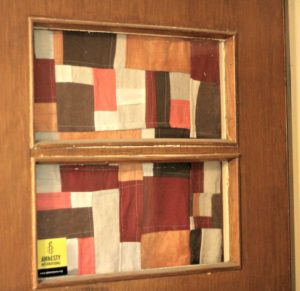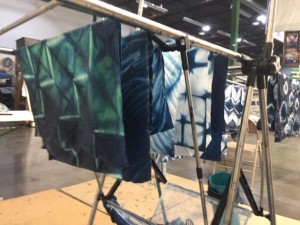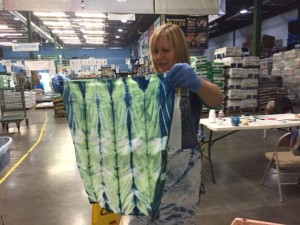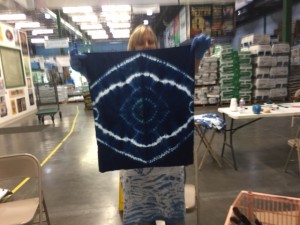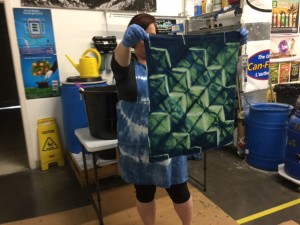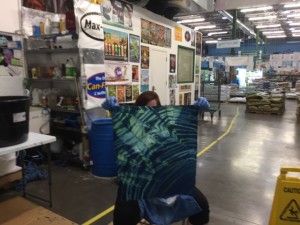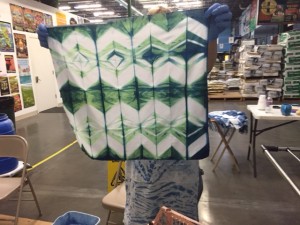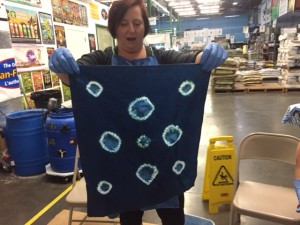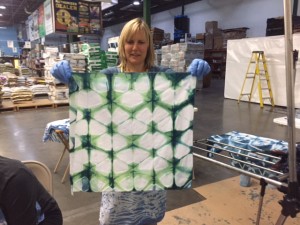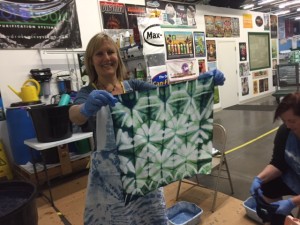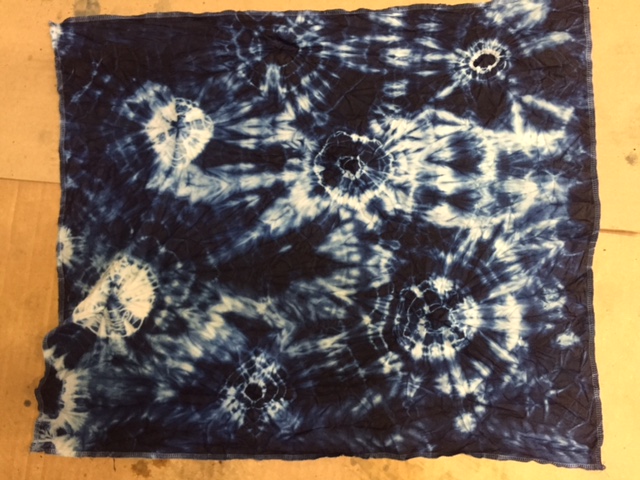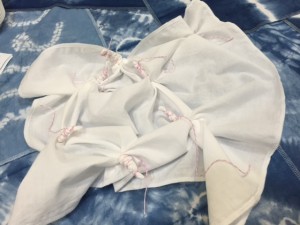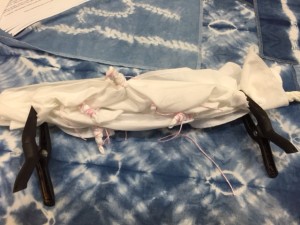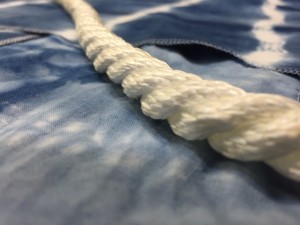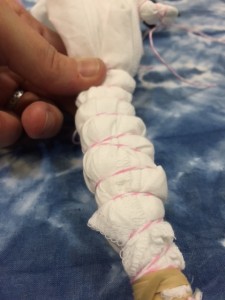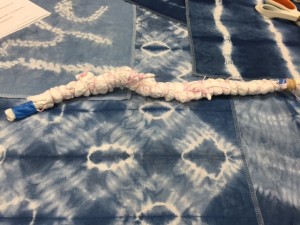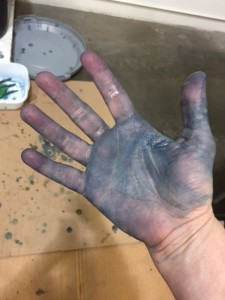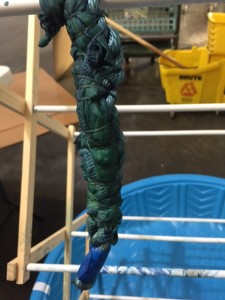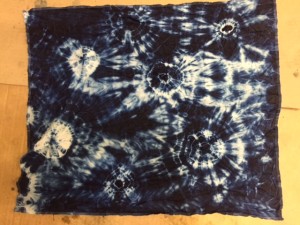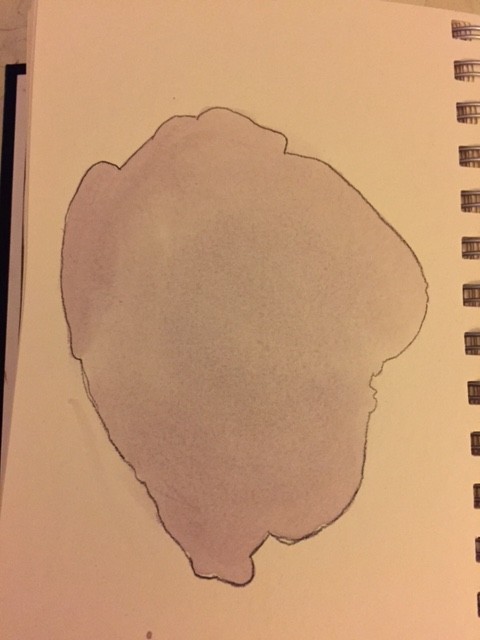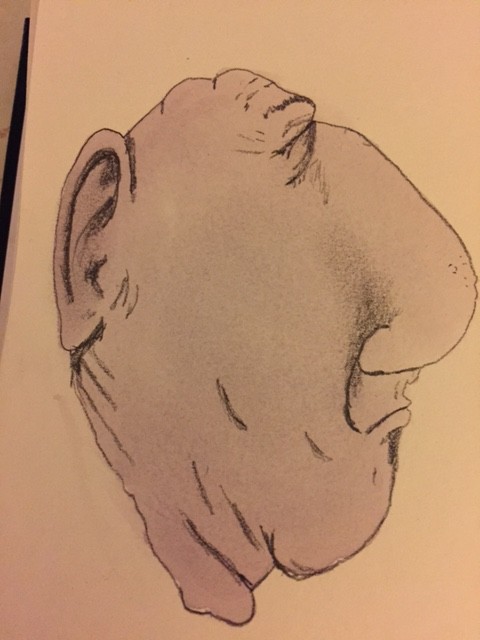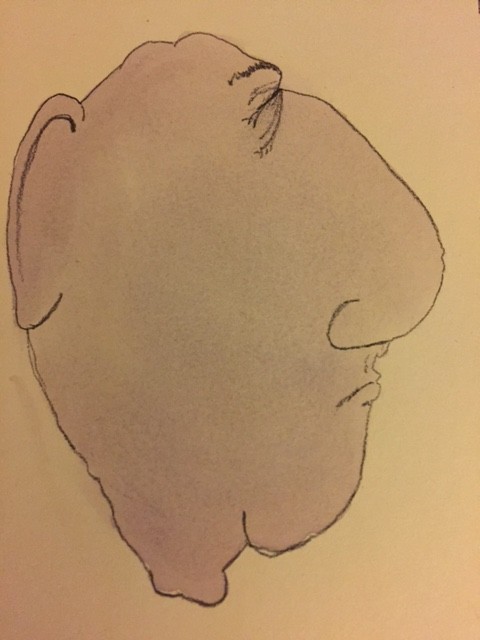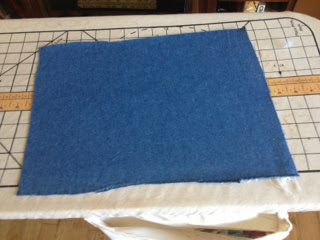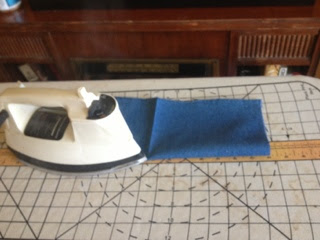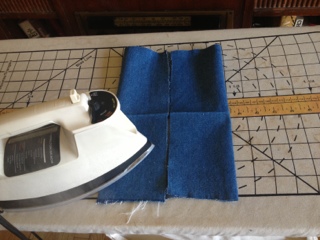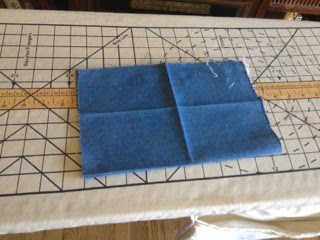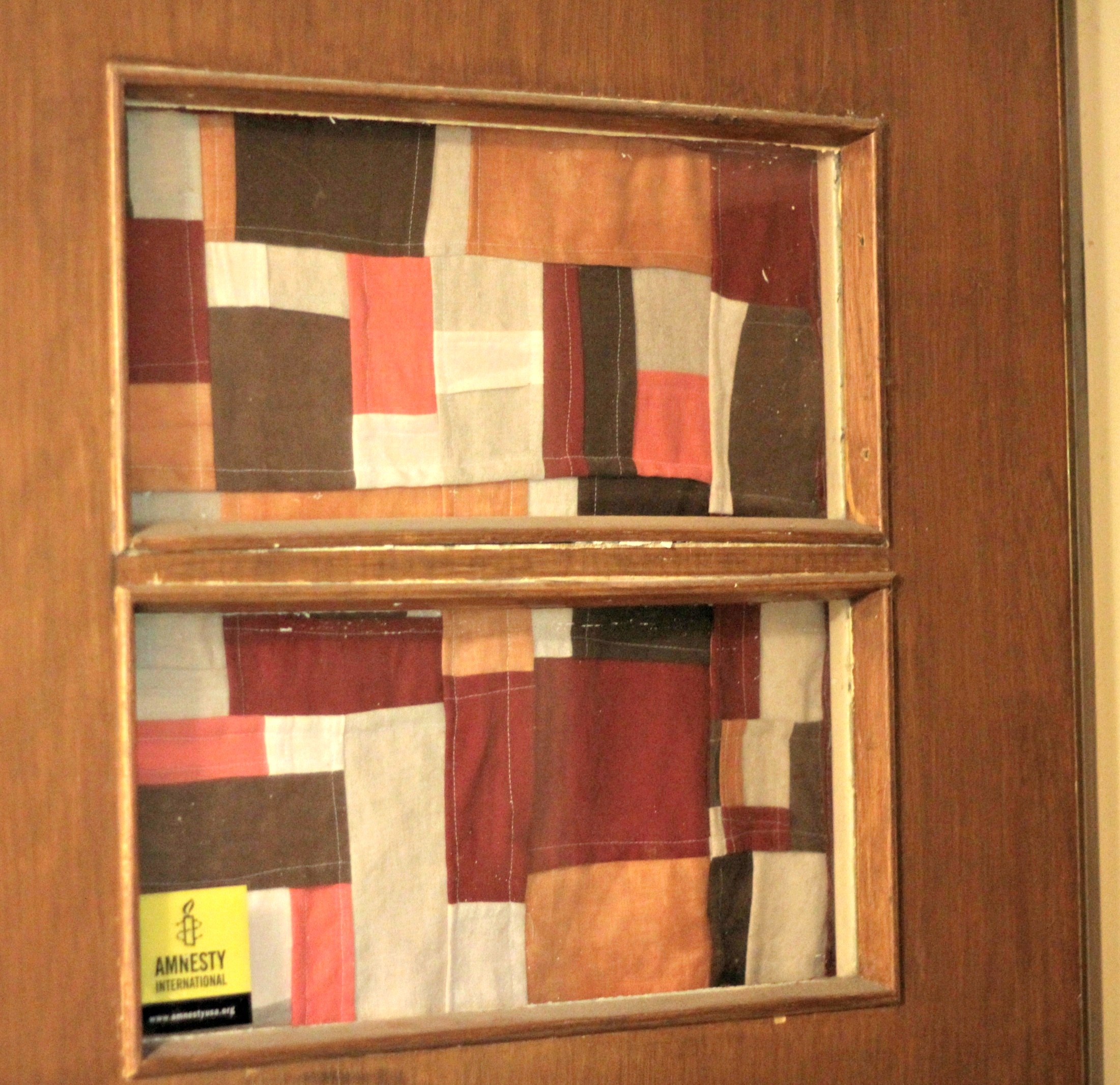
I can’t be forever dyeing! Sometimes I like to dig into old news. A nice big pile of linen can be seriously inspiring.
So are these gorgeous pojagi. Not really quilts, though pieced like one, a pojagi is a Korean wrapping cloth. I was suddenly struck with how ugly the curtain on the door to the garage was. It’s been there as long as we’ve owned the house and has always escaped my notice. It’s a perfect storm! Drop everything and MAKE STUFF!!
Notice the aluminum square to the left of the pile. I cut it up with scissors every now and then to sharpen the blades. It worked for a short time and was helpful because my scissors are overdue for a sharpening. But I digress – Check out those orange pants.
They were at my local thrift shop and I had to have them. They were 100% linen, Ralph Lauren and PINK. I thought I could dye them brown but stupidly picked up the terra cotta dye (WHY?) and they went horribly orange and – even if I had grabbed brown – fatally splotchy. I put them into storage for years.
This is one of the first dye jobs I ever did. Now I know how to pre-treat fabric so it dyes evenly. But – AND THIS IS IMPORTANT – you have to do stuff wrong first before you do it right to really learn…climbing off soap box… Also, easy come, easy go. I can always cut things up and make them into something else.
So, I cut up several linen pieces (5 pairs pants, 1 red dress, 1 white shirt, 1 orange top) and ironed the bejeebers out of them…so satisfying to get rid of those bejeebers. I then cut them into smaller squares without giving it too much thought. I wanted random sizes for a crazy quilt look.
Here’s a quick tute on how to make an enclosed seam:
One of the many cool things about pojagi‘s is that they have no wrong side. I think this kind of seam is called a flat felled seam but feel free to correct me. I layered the square on top about 1/2 inch lower than the edge of the bottom square.
I sewed the seam down at about 1/4 down from the edge of the top square.
There is a whole lot of ironing involved with this process but linen is happy to be ironed. I ironed the overlap from the bottom square into the seam allowance.
Like so.
Then I sewed along the ironed under edge and voila! A completely enclosed seam. For consistency’s sake, I call this the wrong side
Here’s the right side. Time to iron it again to give it a clean look. I’m not gonna lie, I get a lot of satisfaction from ironing linen…I love you, linen. Sorry, that should have been private. Anyhoo, I actually messed that up once or twice so I have some wrong side seams on my right side and vice versa but it’s a very forgiving process. I made several panels and then sewed all those together using the same seam. It was time consuming but I love the result:
Tada! The Final Curtain. I rushed the end – it was dinner time – so the top is messy. I should, and one day may, redo it but I’m just going to leave it for now. It makes me happy.
Here’s one of the other cool things about pojagi, because they are not quilted – they don’t have to be because the seams are totally enclosed – they are as sheer as the fabric used and look amazing with the light behind them. Perfect for curtains in a place where privacy isn’t important. I have the best view from inside my garage.
Since that view just isn’t observed by everyone, I plan on making another for the kitchen window that looks out to the yard.
I feel like the colors have a fun ’70’s vibe. I like being able to follow my nose and make things in an intuitive way. It’s a great project for people who don’t need a plan to follow. But, I’m sure planners could make a nice tidy pojagi, if that’s what they’re into.
Have fun with it. I plan on making a totally indigo dyed version after November, when my month of craft sales is over. Happy sewing…and linen ironing…mmmm..happy…
Like this:
Like Loading...



